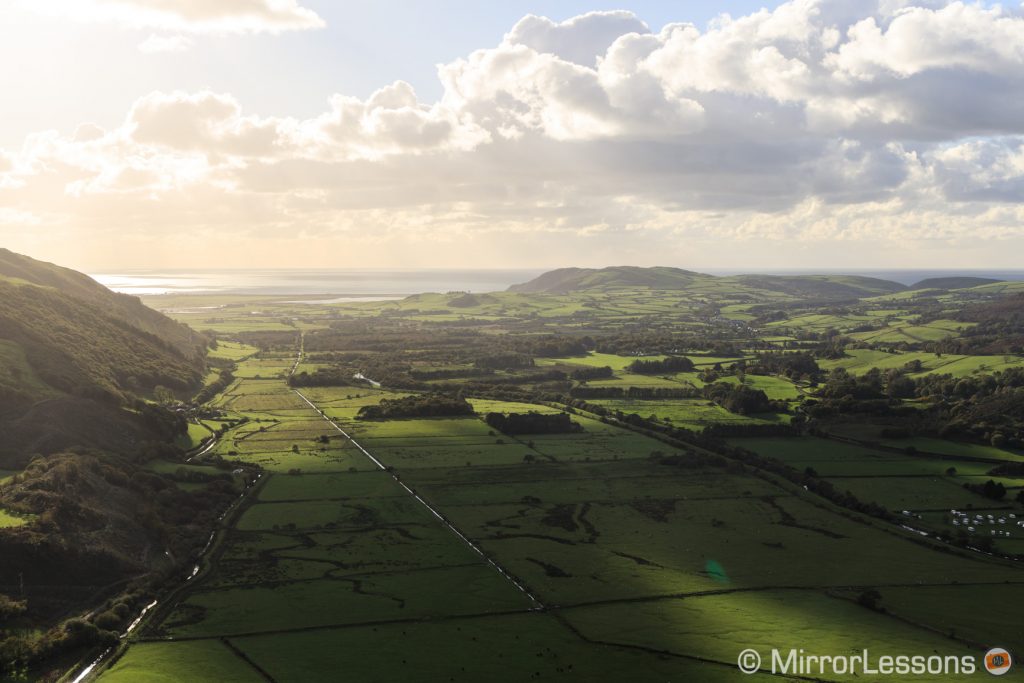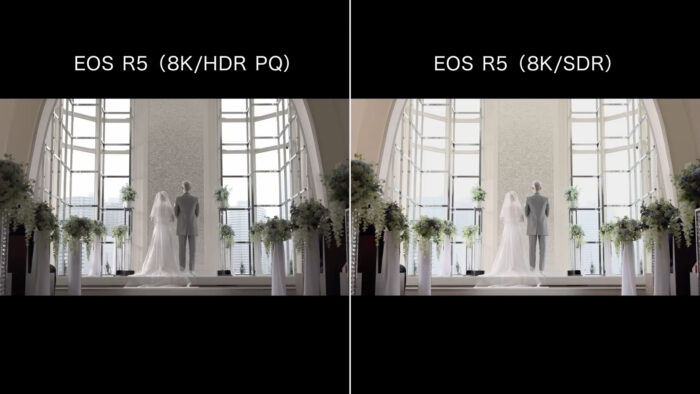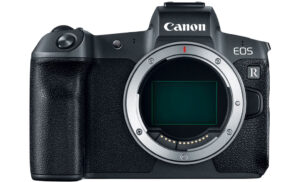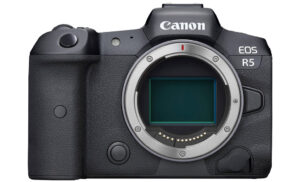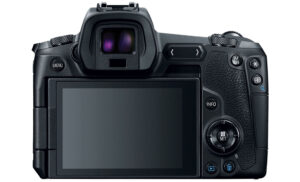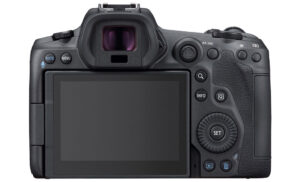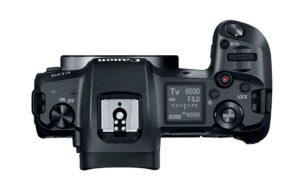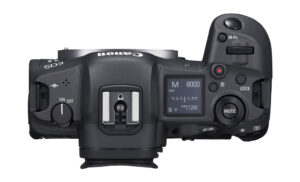The EOS R was the first full frame mirrorless camera released by Canon in 2018. Its unexciting specs inaugurated the RF system with the (unofficial) promise of more thrilling things to come.
Two years later, we meet the EOS R5 (and its sibling the R6), the most important announcement of the year and a sure sign that Canon has finally caught up and is taking things seriously.
So how does the new camera compare to the one that inaugurated the mirrorless journey of the RF system? Let’s find out.
Canon EOS R5 and EOS R6 coverage:
EOS R5 vs EOS R6 – EOS R vs EOS R5 – EOS R vs EOS R6
EOS R6 vs A7 III – EOS R5 vs A7R III – EOS R5 vs A7R IV
EOS R5 vs Nikon Z7 – EOS R6 vs Nikon Z6
Ethics statement: the following is based on our personal experience with the EOS R and official information about the EOS R5. We were not asked to write anything about these products, nor were we provided with any sort of compensation. Within the article, there are affiliate links. If you buy something after clicking the link, we will receive a small commission. To know more about our ethics, you can visit our full disclosure page. Thank you!
1. Sensor
The EOS R features the 30.3MP full frame sensor that was first seen on the 5D Mark IV DSLR, whereas the EOS R5 has a new 45MP sensor. According to Canon, the R5 should have a one-stop dynamic range improvement over the R model (source: Dpreview). Both sensors include a low pass filter.
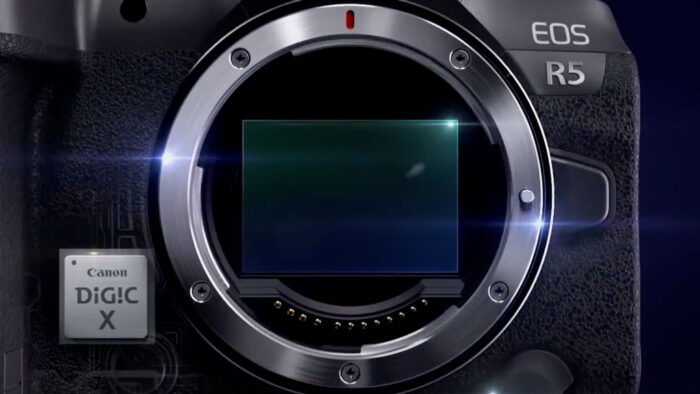
As for the ISO sensitivity, it is as follow:
- EOS R: 100 to 40,000 ISO, up to 102,400 with extended levels
- EOS R5: 100 to 51200 ISO, up to 102400 with extended values
When we tested the EOS R, we found the image quality to be good but it couldn’t match the dynamic range you get with a Sony A7R III, or the high ISO sensitivity of the A7 III.
If the new 45MP chip has been improved by one stop, that would certainly bring the result closer to its direct competitor, but let’s not forget that the 24MP and 42MP sensors are old (especially the A7R III one), so Sony could widen the gap once again with the next generation of E-mount cameras. But in the meantime, we can consider this good news.
The EOS R5 has a brand new image processor as well which improves the sensor readout speed. This means that amongst other things, rolling shutter should be less severe (it’s pretty bad on the R model).
The new camera can also take HDR photos in HEIF format, and has an updated Dual Pixel RAW mode that will allow you to change the background clarity and the light on a person’s face (computer and Canon software required). On the EOS R, you can use this function to change the focus point or the bokeh, but the changes are very small.
2. In-Body Image Stabilisation
Canon has finally added sensor stabilisation on the EOS R5, and it looks very good. It has a maximum compensation of 8 stops (CIPA standard) with some lenses, or a minimum of 6.5Ev with others. (See the full list in our R5 vs R6 article).
The system works with the sensor shift on its own, or in combination with the optical stabilisation of select lenses. Canon has explained that the dual communication between body and lens, facilitated by the 12 pins connectors, is what makes it possible to have a fast system with such a high rating. It works for photo and video.
The EOS R doesn’t have in-body stabilisation so you must rely on IS lenses. For video, the camera can combine optical stabilisation with electronic stabilisation to improve the result, and it didn’t do badly at all in our tests, but the field of view is cropped as a result. The R5 has Digital IS too.
Early testers have reported successful shots taken at 1 second, 2 seconds and even four seconds of exposure hand-held. To give you an idea, the maximum I got with optical stabilisation alone when using the RF 24-105mm f4 was half a second, but the keeper rate increases from 1/8s.
The R5’s performance appears to be close to the results I got with the Panasonic S1R which, along with its sibling the S1, has the best image stabilisation I have tested on a full frame camera. The Panasonic has a rating of 6.5Ev, so I hope to push the R5 further when I review it.
3. Autofocus
The EOS R and EOS R5 use Canon’s advanced Dual Pixel CMOS AF, but the R5 is the first to feature the mark II generation (Dual Pixel CMOS AF II).
One improvement concerns the sensor area: the EOS R AF works across 88% width and 100% height of the frame, but the R5 gets 100% coverage when you use face/eye detection or tracking AF. With Single Point or Zone AF, it’s 90% and 100% respectively.
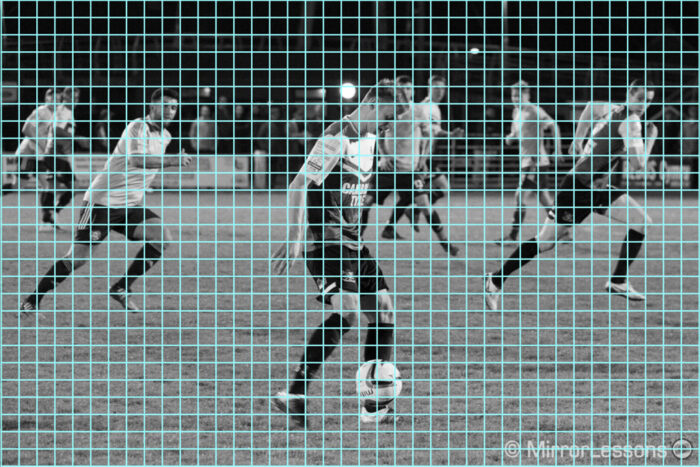
The sensitivity in low light is the same at -6Ev with a 1.2 aperture.
Both cameras feature face and eye detection, and the EOS R AF performance has been improved via firmware since its release, but it doesn’t have the new EOS iTR AF X algorithm that uses deep learning technology to recognise more subjects and improve accuracy. In addition to humans, the R5 can track the body, face or eye of animals including cats, dogs and birds.
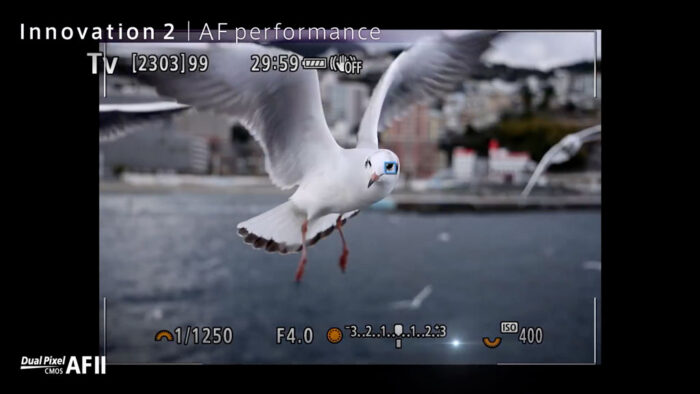
4. Continuous Shooting Speeds
The EOS R was a disappointment concerning the continuous shooting speeds. It offers a respectable 8fps in Single AF, but if you want continuous AF, the speed drops to 5fps or 3fps if you want focus priority rather than release priority. Not great for a 2018 product.
The EOS R5 is on another level entirely: it can go as fast as 12fps with the mechanical shutter, or 20fps with the electronic shutter, and these speeds are available with full AF and AE tracking.
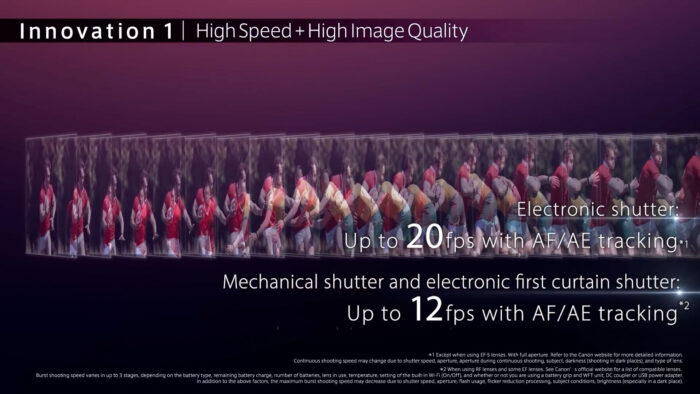
The buffer capabilities look good on the R5 despite the higher resolution. It can do 180 RAW files at 12fps, whereas the EOS R does 47 RAW files at 8fps.
5. 4K vs 8K video
The EOS R can record 4K video up to 30p with a maximum bitrate of 480Mbps when selecting the All-Intra codec. The big caveat is the crop applied to the sensor when 4K is enabled, which is about 1.75x (more than APS-C).
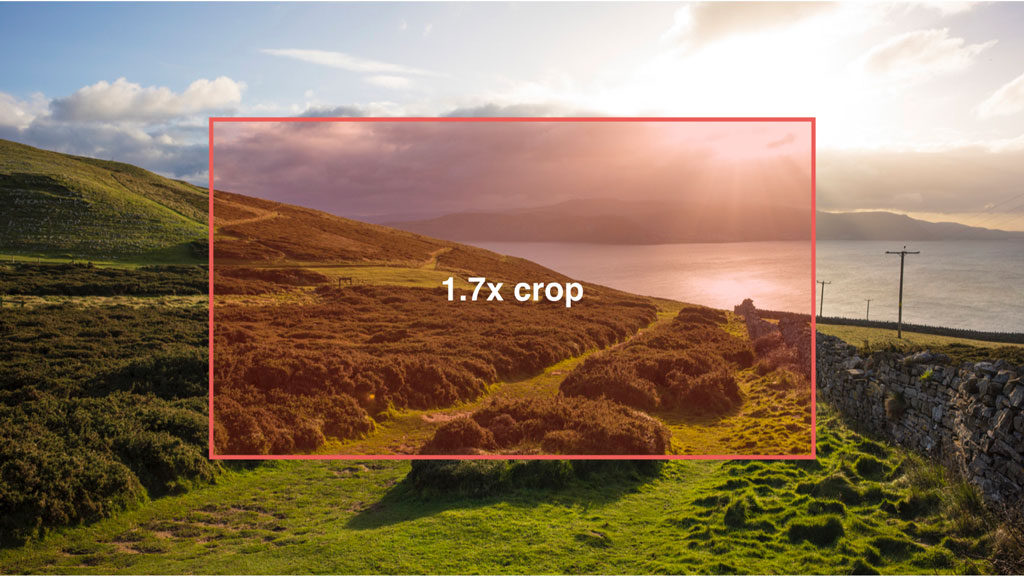
The EOS R5 is the first mirrorless camera to record 8K video (up to 30p). It does so without cropping the sensor. It can also record 8K 12-bit RAW video internally (also a first) albeit only in DCI format (17:9). The maximum bitrate is 1300Mbps (All-I) or 2600Mbps (RAW).
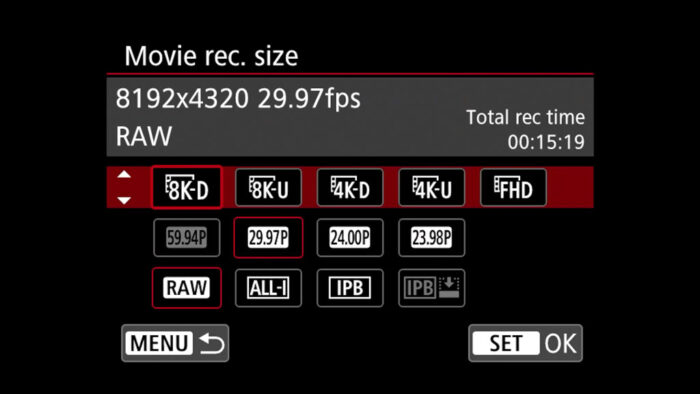
In 4K, it goes up to 120fps with the High Speed mode, or up to 30p if you want oversampling from 8K. Various bitrates are also available with IPB and All-I compression.
The EOS R can record up to 30 minutes per clip. The R5 does the same except at 8K where it stops after 20 minutes, or 4K/120p which is limited to 7 minutes. EOSHD has expressed some concerns about overheating on the EOS R5 after discovering an official document from Canon stating that the R5 can shut down after 20 minutes and won’t be able to resume recording for very long after cooling down. We’ll make sure to do some tests once we have the chance to review the camera. (Update: Canon has issued a statement regarding the R5 and overheating, which more or less confirms all of the above. There is also an “overheat control” setting on the camera to reduce heat when the camera is in standby).
In Full HD, the EOS R goes up to 60p. If you want more frame rates for slow motion footage, you need to select 120fps at 720p (HD ready). Surprisingly, the R5 doesn’t go past 60p. For a camera capable of 8K and 4K/120p recording, you would have thought that 1080p at 240fps was possible.
Both cameras can record C-Log internally, but only the R5 can do so with 10-bit 4:2:2. The EOS R is 8-bit and you have to use an external recorder connected to HDMI to get 10-bit. Furthermore, the R5 can do HDR video with the HDR PQ standard.
Both cameras have a microphone input and headphone output (3.5mm socket).
6. Viewfinder
The EOS R has a good viewfinder with a 0.5-inch panel, a resolution of 3.69M dots, a magnification of 0.76x and an eye-point of 23mm. Live view works at 30Hz by default but switches to 60Hz when half-pressing the shutter button.
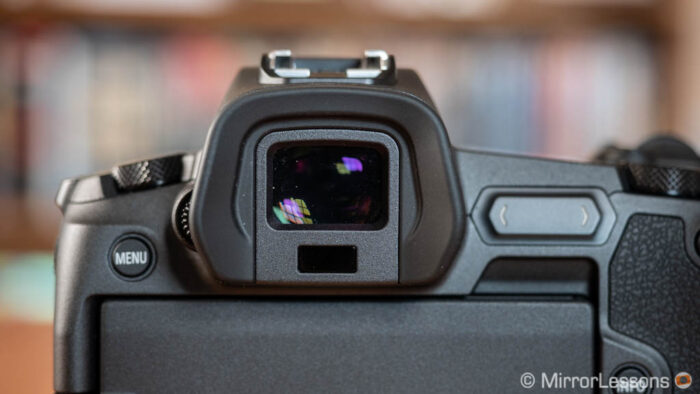
The EOS R5 EVF has more resolution with 5.76 million dots and the refresh rate can go up to 120fps. The other characteristics are the same.
One thing I always found annoying on the EOS R is that the live view freezes for an instant after taking a picture, which creates a lag. It happens in the EVF as well as the LCD screen. You can avoid this by keeping the shutter button half-pressed after capturing the shot but if you release it, the lag will appear briefly again. I hope the R5 doesn’t behave in the same way.
7. Design and controls
The EOS R and EOS R5 share a very similar design including some of the button layout and a large grip at the front.
The R5 is slightly larger and deeper, and is heavier.
- EOS R: 135.8 x 98.3 x 84.4mm, 660g
- EOS R5: 138 x 97.5 x 88.0mm, 738g
Both cameras use a full magnesium alloy chassis and are weather sealed. The R5 is said to have the same level of robustness as the 5D mark IV DSLR.
The EOS R5 has an extra button on the front, and three at the back. In addition to the front and rear dials, the new camera has Canon’s classic rear wheel (the R has a 4-way pad instead) which means that the exposure triangle (ISO, shutter speed and aperture) can be controlled by three different dials. Then we have an AF joystick with adjustable sensitivity on the rear. The latter is a welcome addition as it is something I missed on the EOS R.
On top, they both have the M button that you press and hold while using one of the twin dials (or alternatively the D-pad or touch screen) to change shooting mode. They also have a small monochrome LCD screen on the top that shows you the settings in use, and can be backlit.
One thing you won’t find on the R5 is the M-Fn touch bar near the EVF. It responds to two gestures (swipe or tap) and can be used to change various settings. This solution was a first on a mirrorless camera and is somewhat controversial: some like it, others don’t. It grew on me the more I used the camera, but it’s not one of those things I’m going to miss when I test the R5.

Both cameras have the same touch sensitive multi-angle LCD screen on the back.
The EOS R5 is shipped with an updated battery, but since the dimensions and connectors are the same, you should be able to buy it separately for the EOS R.
8. Memory cards
One disappointment for many was the single SD UHS-II card slot on the EOS R.
The R5 has two slots but one is for a CF express card, which is more expensive, but also faster and optimal for the high bitrate of 8K video and 8K RAW video. (The latter can’t be recorded to a SD card.)
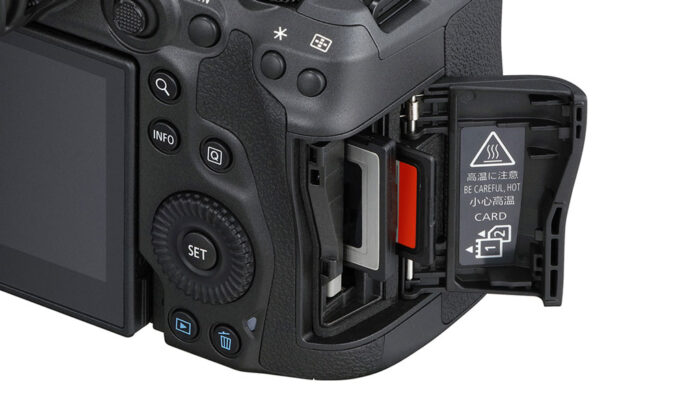
9. Wireless connectivity
The EOS R has Wifi & Bluetooth connectivity to transfer your photos to a mobile device, remotely control it, add GPS coordinates or tether to a laptop.
The EOS R5 has a faster 5.0GHz Wifi protocol which means that the transfer will be much faster. The optional R10-A battery grip (not to be confused with the regular battery grip) can amplify the signal and has an Ethernet port. The camera also supports FTP and FTPS protocols (you need the optional WFT-E7 II Accessory for the EOS R).
Both cameras can connect to the image.canon cloud service.
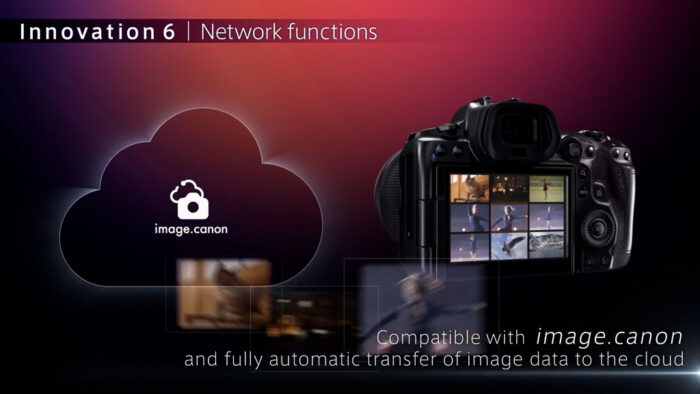
10. Price
The Canon EOS R is currently available for $1800, £1880 or €2000. Street prices can vary, and there might be instant savings or cash-backs at different times of the year.
The Canon EOS R5 has launched at a price of $3900, or €4700 / £4200, and therefore constitutes a significantly larger investment.
Prices are for the body only and as of July 2020.
Conclusion
The EOS R fulfilled its role as the opening act for the RF system, at a time when Canon seemed more interested in building a solid set of lenses than producing new and exciting camera bodies. But as it turns out, there were more things in the works than we imagined.
Now that the wait is over, I’m happy to write that Canon seems to be taking things seriously. They’ve produced a camera that is not only worthy of the Canon name but also destined to take over part of the DSLR segment – not a small thing considering how large the EF system is!
The R5 is everything we could hope to see on an advanced and up-to-date Canon camera. It’s not so much about 8K video for me but everything else: high frame rates in 4K, a new and very promising autofocus system, faster burst speeds, a new sensor and the reassuring feeling that it is going to be a faster and more reactive camera altogether, something that the EOS R is not. Let’s just hope that overheating is not going to be a major issue for video.
Reminder: the links below are affiliate links. If you decided to buy something after clicking the link, we will receive a small commission.
Check price of the Canon EOS R on
Amazon | Amazon UK | B&H Photo
Check price of the Canon EOS R5 on
Amazon UK | B&H Photo
Canon EOS R5 and EOS R6 coverage:
EOS R5 vs EOS R6 – EOS R vs EOS R5 – EOS R vs EOS R6

